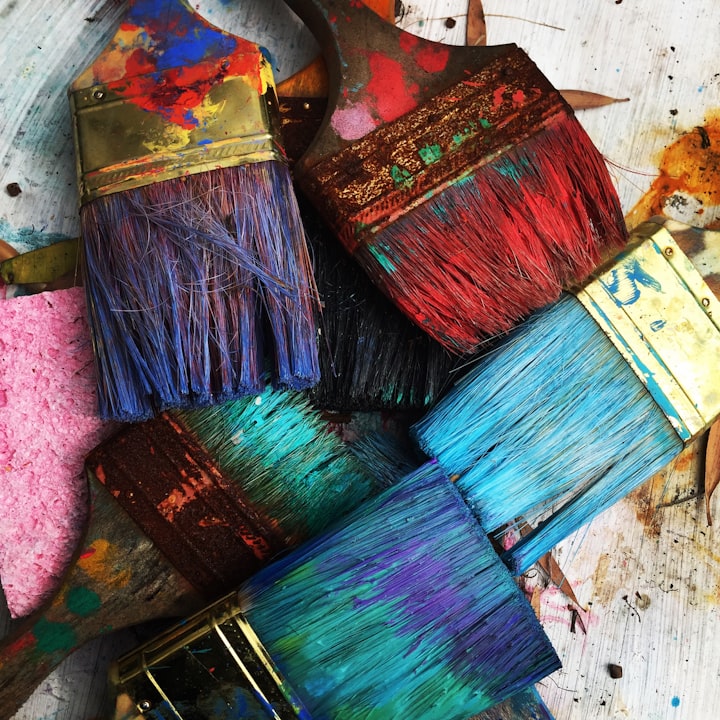The psychology of color in design
How color choices affect the mood and perception of a space

The Psychology of Color in Design
If you're into interior design or just love to decorate your home, you'll know that color plays a huge role in creating a certain mood or perception in a space. And that's exactly what we're going to talk about today. We'll cover the basics of color theory, how different colors can evoke different emotions, the psychology of color schemes, and how color can affect perception. So, let's dive in!
First things first, let's talk about color theory. This is the backbone of color in design and it's crucial to understand it before we move on to anything else. Essentially, color theory is the study of how different colors interact with each other. You might have heard of the color wheel, which shows the relationships between different colors. And did you know that color temperature (warm vs cool) can also affect a space in terms of evoking emotions or creating a certain ambiance. The use of warm colors can create a cozy and inviting atmosphere, while cool colors can create a sense of serenity and tranquility.

Okay, now that we've got the basics out of the way, let's dive deeper into the psychology of color. You might have heard that blue creates a sense of calmness, or that red can create energy. But did you know that different shades and hues of colors can also evoke different emotions? For example, a pale blue can create a sense of serenity, while a deep blue can create a sense of mystery. It's important to consider not just the basic colors, but also their variations when selecting colors for a space.
Additionally, it's also important to consider how colors interact with each other. The use of analogous or contrasting colors can greatly affect the overall mood and perception of a space. Analogous colors, which are colors that are next to each other on the color wheel, can create a cohesive and harmonious atmosphere. On the other hand, contrasting colors, which are opposite each other on the color wheel, can create a dynamic and vibrant atmosphere.
Now, let's talk about how color can affect perception. You might not have thought about it, but color can affect how a space is perceived. For example, certain colors can make a room appear larger or smaller. And did you know that color can also be used to create a sense of depth or movement in a space? It's true! Color can be used to guide the eye in a space, and it's important to consider how color can affect perception when designing a space.
Another way that color can affect perception is through the use of color symbolism. Different colors can have different cultural or psychological associations, and these can greatly affect how a space is perceived. For example, the color red may symbolize passion or love, while the color black may symbolize mystery or sophistication. It's important to consider these symbolic meanings when selecting colors for a space, as they can greatly affect the overall mood and perception of the space.
Furthermore, color can also be used to create a sense of balance and proportion in a space. For example, the use of light colors can make a room appear larger and more open, while the use of dark colors can make a room appear smaller and more intimate. It's important to consider the size and layout of a space when selecting colors, as this can greatly affect the overall balance and proportion of the space.
In conclusion, color plays a vital role in the psychology of design. It can evoke different emotions, create different moods, and affect perception in a space. By understanding the basics of color theory, the different ways that colors can interact, and the symbolism and associations of colors, you can use color to enhance the overall design and functionality of a space.
It is also worth mentioning that the use of color can also have an impact on branding and marketing. Different colors can evoke different emotions and associations, and can be used to create a certain image or message for a brand. For example, the color blue is often associated with trustworthiness and dependability, making it a popular choice for financial institutions. On the other hand, the color yellow is associated with happiness and positivity, making it a popular choice for food and children's products. It is important to carefully consider the use of color in branding and marketing, as it can greatly affect how a brand or product is perceived by the target audience.
In short, color is a powerful tool in design, and it plays a crucial role in creating the mood and perception of a space. Understanding color theory, symbolism, and the psychology of color can greatly enhance the overall design and functionality of a space, as well as the branding and marketing of a product or company.
About the Creator
Mohammad Hammash
Web search lover🔍 & bookworm📚. Passionate about innovation💡, creativity🎨. Seeking new ideas & perspectives🌉. Making positive impact using tech🌍 humanity💕






Comments
There are no comments for this story
Be the first to respond and start the conversation.